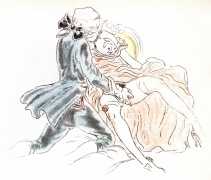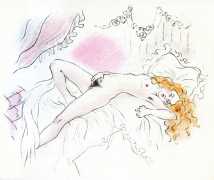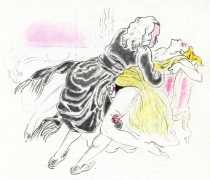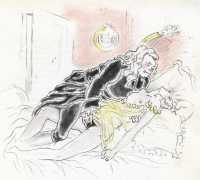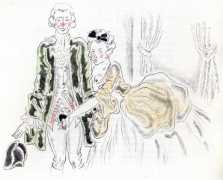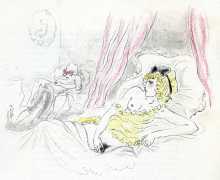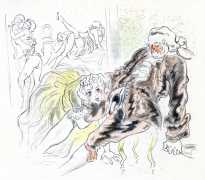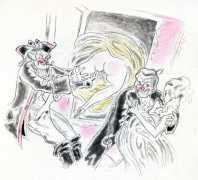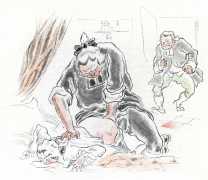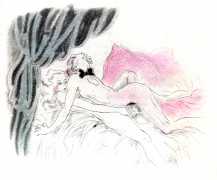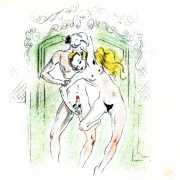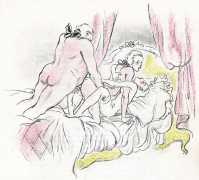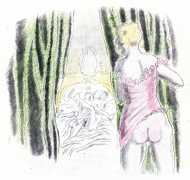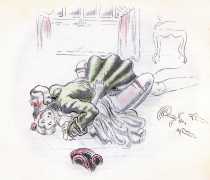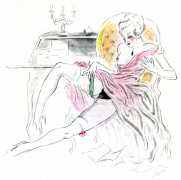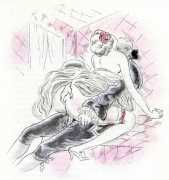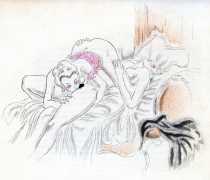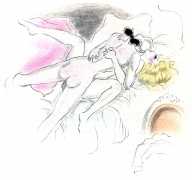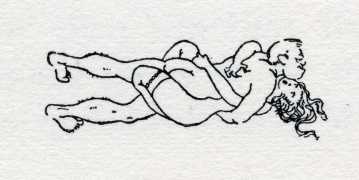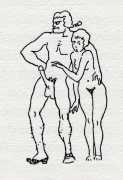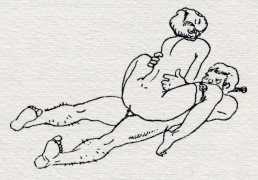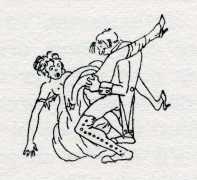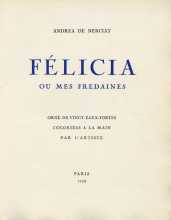 Félicia, ou mes fredaines (Félicia, or My Escapades) was André Collot’s first real erotic commission, quite likely as with the earlier portfolios from Maurice Duflou, though the title page gives no publisher’s name, simply saying ‘Paris’. Collot’s twenty delicately-coloured pencil drawings demonstrate both his skill and his ability to illustrate a narrative in just a few well-placed lines; these are some of his best and simplest erotic illustrations.
Félicia, ou mes fredaines (Félicia, or My Escapades) was André Collot’s first real erotic commission, quite likely as with the earlier portfolios from Maurice Duflou, though the title page gives no publisher’s name, simply saying ‘Paris’. Collot’s twenty delicately-coloured pencil drawings demonstrate both his skill and his ability to illustrate a narrative in just a few well-placed lines; these are some of his best and simplest erotic illustrations.
Along with his 1803 Le diable au corps (The Devil Incarnate), Félicia, published in 1775, is a major French erotic narrative by André-Robert Andréa de Nerciat, the son of a Burgundian royal official who retired from the military to concentrate on writing plays, verse, light music and pornographic novels. Given how popular Nerciat’s works were, it is surprising that there has never been an English translation of Félicia; you can read it in French here.
The novel is a first-person account by the eponymous Félicia, a libertine young woman who is primarily focused on pleasure. Abandoned as a child, she is adopted by Sylvina and Sylvino who raise her in a sexually-infused atmosphere. Seduced by the Chevalier d’Aiglemont, she becomes his mistress, regularly joined by other characters – a bishop, an English aristocrat, and fourteen-year-old Monrose. The novel examines the classic libertinist themes of Nerciat’s times, primarily the exploration of sexual pleasure unlimited by externally-imposed morality. Félicia enjoys the pleasures of life and love without being burdened by loyalty; her libido is quite enough reason for her actions. The sexual scenes are described without ambiguity but without crudeness; unlike Sade, Nerciat paints a sexual utopia without coercion or violence.
The first edition of Félicia, printed in Belgium, was prepared without the agreement of its author; Nerciat managed to oversee a corrected and approved reissue in 1778. The book quickly became an enormous success, with no fewer than twenty-one editions appearing by 1900.
The Collot-illustrated Félicia was published in a limited numbered edition of 331 copies.


